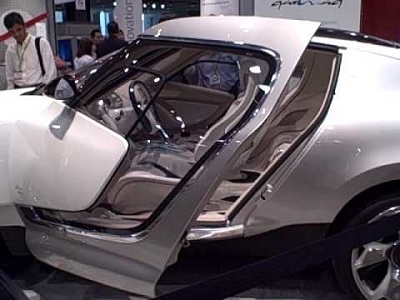There is an ever-increasing need for lightweighting, engine downsizing, and vehicle electrification and these trends are expected to drive demand and adoption of high-performance plastics (HPPs) in automotive and aerospace applications. The automotive and aerospace HPP market is projected to grow at a CAGR of 6.2% until 2024 and reach $3.05 billion, according to Frost & Sullivan's recent analysis of the High-Performance Plastics (HPPs) Market in Automotive and Aerospace Industries
"The aerospace industry is likely to present significant opportunities for HPP owing to the growing passenger traffic and business travel around the world. Airbus and Boeing remain the key market participants in the commercial aviation segment, striving to meet the ever-increasing demand for aircraft, especially in the APAC and ROW markets," said Soundarya Gowrishankar, Senior Research Analyst, Chemicals and Materials, EIA at Frost & Sullivan.
From a regional perspective, APAC will remain a key market for HPPs in the automotive industry, owing to the high volume of production, whereas the demand for HPPs in the aerospace industry will come from Europe and North America due to the concentration of component manufacturing in these regions. Production expansions will help market participants gain a stronger foothold in the marketplace.

Key market trends show that requirements are on the rise across various applications to push the adoption of composite-grade HPPs in both automotive and aerospace industries due to their superior performance qualities. Developments in 3D printing in terms of material, process, and technology readiness are also accelerating the demand for HPPs in aerospace applications with stakeholders across the value chain proactively focusing on research and development activities to drive 3D printing applications in aerospace. In addition, original equipment manufacturers (OEMs) and component manufacturers continue to expand into new regions. As they do so, plastic distributors will have an increasing role to play in enabling the HPP producers to keep supplying to their key customers in these new regions.
Tightening regulations around carbon dioxide (CO2) emissions compel manufacturers to adopt lightweighting strategies, thereby steering the use of plastics in more challenging applications. As HPPs offer advantages over metal counterparts in a number of challenging applications such as engine components, fuel tanks, and bearing cages, these have become an important option.
"Electric vehicles (EVs) present significant opportunities for HPPs in battery components. For instance, battery modules, battery housing, gaskets, connectors and sensors in EV present robust growth opportunities for HPPs owing to their high-temperature stability, chemical resistance to electrolytes, dimensional stability, flame-retardant nature, high-voltage resistance, and electrical insulation properties," noted Gowrishankar.
Off White X Max 90













